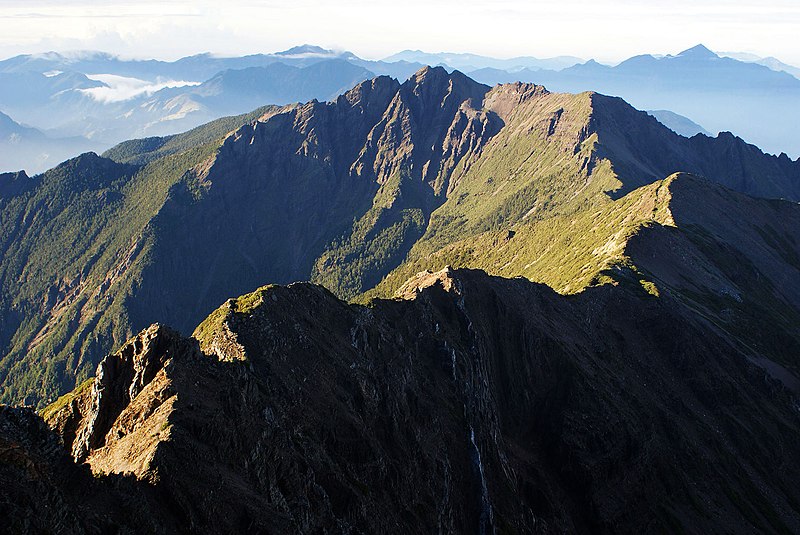
Mount Jade Facts
- The term Mount Jade serves as the most frequently applied name for this true marvel of natural geological processes. It also holds other titles, though, both in english and that of the region it formed in. These include Jade Mountain, Mount Yu, and Yu Shan.
- No matter which of these one chooses to employ when referring to it, the site remains a magnficent one. It earns this distinction for several reasons. Its pure beauty serves as one of these, obviously. Yet it’s also still considered as a sacred site by some people.
- The Indigenous Peoples of the area long knew of its existence, of course. The first known sighting of it by outsiders, however, took place in 1857. At that time, the captain of an American freighter, W. Morrison, saw it while leaving a harbor in the region.
- The majestic Mount Jade stands out from many other mountains around the world due to a specific distinction. That’s because its summit boasts the fourth highest elevation of any island in the world. That fact alone makes it a site worth the effort of visiting.
- Thankfully, this beautiful mountain now enjoys a certain degree of protection. That’s true since it and several surrounding peaks now lie within the Yushan National Park. The local government created the park to protect the remarkable area in the year 1985.
Related Articles




Mount Jade Physical Description
The gorgeous Mount Jade possesses an almost magnetic beauty and charm. Part of that is, of course, its sheer beauty and majesty. Another undeniable aspect of this, though, remains its obviously impressive physical dimensions. They’re truly deserving of appreciation.
It’s immediately apparent to those who venture here that the mountain also stands out due to the nature of its construction. That’s because this remarkable site boasts not just one, but a total of five principal peaks! The highest of these appropriate bears the name Main Peak.
The Western Peak measures 11,375 ft (3,467 m) in height. The Southern Peak, however, tops this at 12,612 ft (3,844 m). The Northern Peak surpasses this, at 12,657 ft (3,858 m). Then comes Eastern Peak, at 12, 694 ft (3,869 m). Main Peak stands supreme at 12,966 ft (3,952 m).
Each of the peaks of Mount Jade also distinguish themselves from their neighbors in various ways. The South Peak, for example, consists of a sharp pinnacle of deep black shale. North Peak, meanwhile, represents a mildly-rising, long slope, resembling the hump of a camel.
Due to a combination of great height and its terrain, the East Peak’s considered one of the ten major summits of its region of the world. While these mountains remain relatively barren, the West Peak doesn’t. In fact, it holds a covering of relatively thick, tropical forests.

Mount Jade Location, Formation, and Ecology
The amazing Mount Jade formed in a region of the globe already well known for its abundance of natural wonders. That general area of the world likely won’t surprise many people, however. That’s true since this geological site lies in the zone known as East Asia.
More precisely still, it formed on what’s now the island nation of Taiwan. The location of the island itself places it at the approximate junction of the East and South China Seas. That puts it within the larger zone composed of the northwestern section of the Pacific Ocean.
This location places the island on which it sits at the intersection of two tectonic plates. The mountain itself represents simply part of the overall uplift arising from their collision, as does the entire island. Evidence indacates that uplift began roughly 250 million years ago.
The slow yet inexorable collision of the two plates inevitably caused an upward movement of what was originally seabed. The land eventually buckled, bending vertically, creating the landscape as it exists now. That motion continues today, continuing to slowly alter the site.
Its placement provides Mount Jade with a climate that ranges between subtropical and tropical. Lower elevations contain large evergreen forests. Higher points on the slopes hold both coniferous and deciduous forests. Mosses and grasses dot the higher spots.
These support an abundance of wildlife. In total, 28 known species mammals call the island home. Laong with these, 17 varieties of reptiles, 12 amphibian species, and 130 types of birds do also. An additional total of 186 known butterfly varieties also add to its native beauty.
Features Sharing Its Region



Check out our other articles on Africa’s Many Geological Masterpieces, Striped Skunk, Sacred Valley, Eastern Cicada Killer, Kinnikinnick, Philippine sailfin lizard, Serval, Axolotl









Leave a Reply